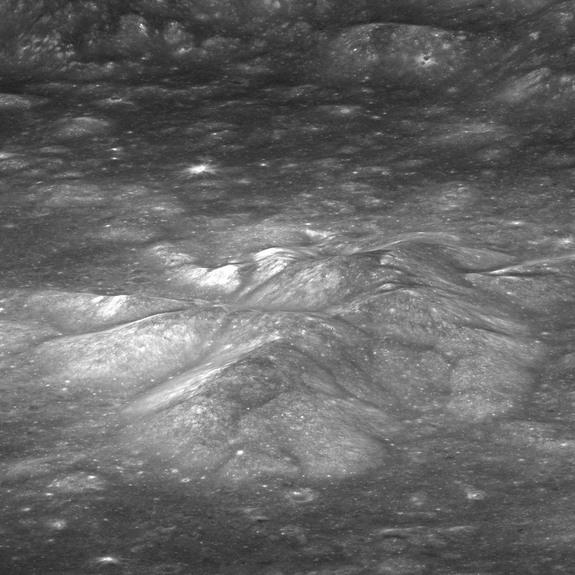 Science and Weather
Science and WeatherWater found on the moon points to deep underground source

NASA scientists have found water on the moon that apparently comes from an unknown source deep under the lunar surface.
Although the moon's surface is a barren, nearly airless place, water has been found in lunar rocks and in the lunar soil. Scientists believe that this water forms as the surface is bombarded by particles from the solar wind. However, after poring over data gathered by the 2009 Moon Mineralogy Mapper (or 'M-cube') mission, as it orbited the moon on board India's Chandrayaan-1 spacecraft, they discovered that some of the water has a different source.
Flying over an impact crater called Bullialdus, near the moon's equator, the M-cube instrument detected rocks in the peak at the crater's centre that were a type formed by magma trapped deep inside the moon's crust. These rocks were brought to the surface by the massive impact that formed Bullialdus.
Bullialdus is in a region of the moon where water doesn't tend to form from solar wind particles, but remarkably, M-cube did find evidence of water. As the instrument gathered chemical information from the rocks in the middle of the crater, it detected a molecule called a 'hydroxyl' — one hydrogen atom bonded to one oxygen atom. This isn't water (since water is two hydrogen atoms bonded to one oxygen atom), but its presence tells the scientists that these rocks contain 'magmatic water' — water that was formed deep underground.
[ More Geekquinox: Tantalizing new drug offers promise of exercise in pill form ]
This discovery gives scientists more clues about what's going on underneath the moon's surface, and it will help them piece together the moon's past, especially about how the moon formed. Additionally, it shows that the moon has a lot more water than we thought it had, which may prove to be a very valuable resource for us in years to come. As an added bonus, since magmatic water previously detected in moon rocks brought back by the Apollo astronauts was thought to have been contamination from Earth sources, this also provides a long-overdue exoneration for the astronauts and scientists who worked with those samples.
(Images courtesy: ISRO, NASA/GSFC/Arizona State University)
Geek out with the latest in science and weather.
Follow @ygeekquinox on Twitter!


